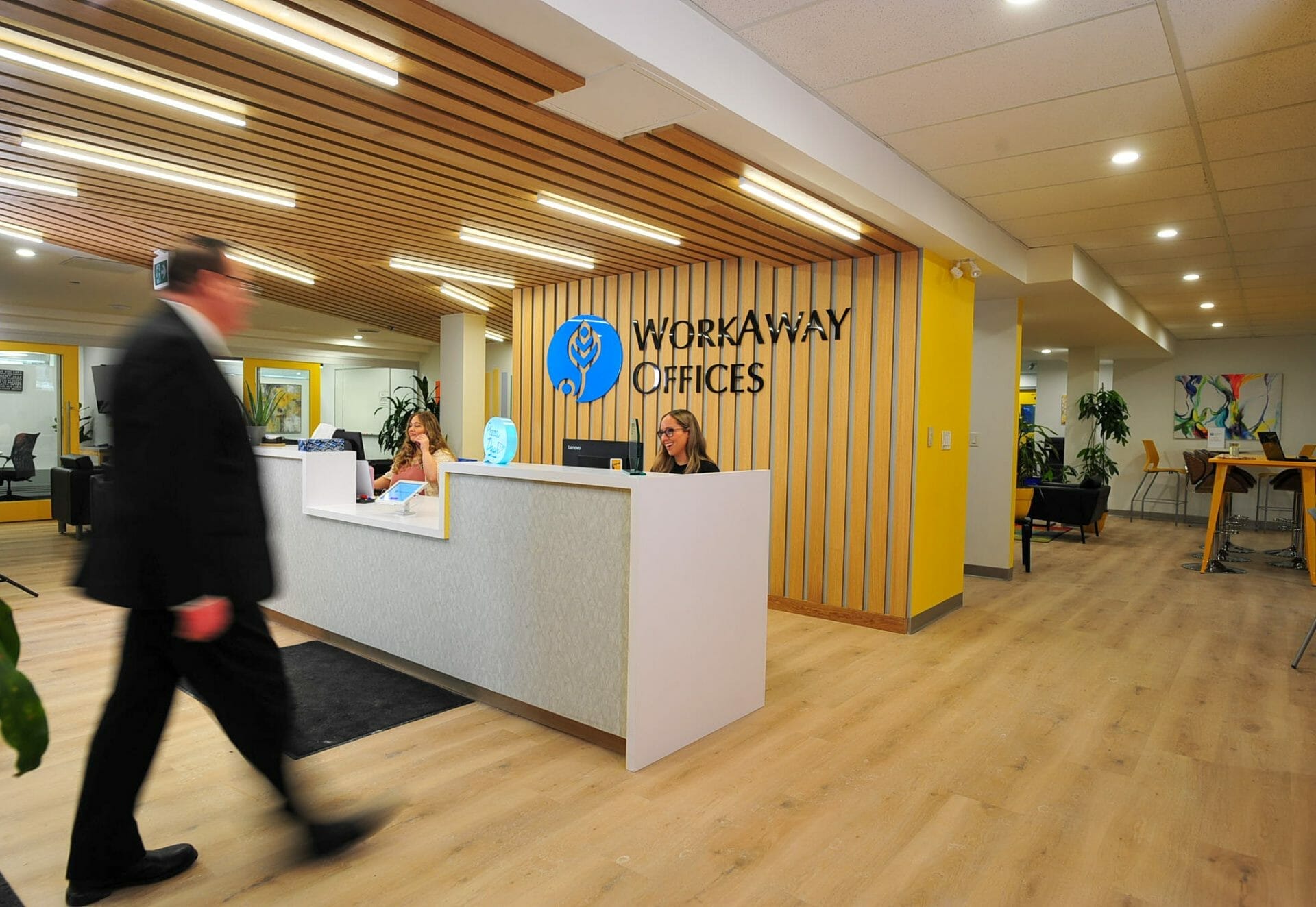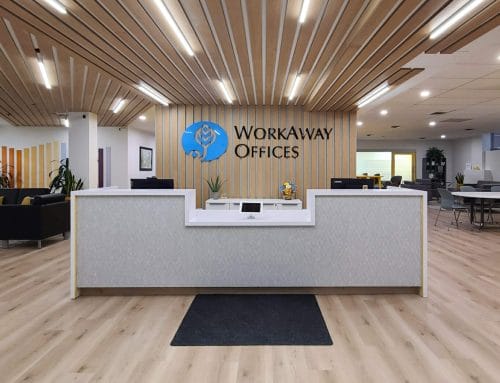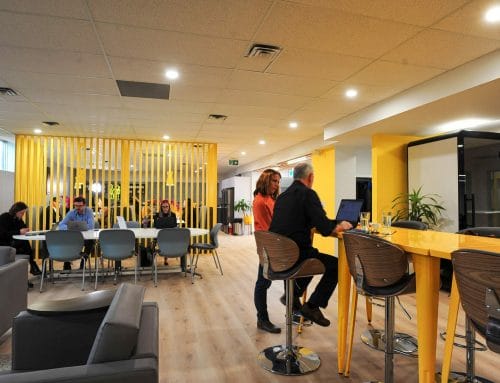The evolution of workspaces has brought about a paradigm shift in the way businesses and professionals approach their physical environments. Traditional tenant office leases, once the norm, are facing competition from the dynamic and flexible world of coworking and flexible office spaces. In this article, we delve into the manifold benefits that coworking and flexible office spaces offer in comparison to the rigidity of traditional tenant office leases. From agility and cost-effectiveness to fostering collaboration and creativity, the advantages of flexible office solutions are shaping the future of work.
1. Agility and Flexibility
One of the most significant advantages of coworking and flexible office spaces is their inherent agility. Unlike traditional tenant office leases that often require long-term commitments, flexible solutions allow businesses to adapt swiftly to changing circumstances. Whether you’re a startup experiencing rapid growth or a company seeking to downsize, the ability to scale up or down without being tied to lengthy contracts provides unparalleled flexibility.
2. Cost-Efficiency
Flexible office spaces bring with them cost-effectiveness that traditional tenant office leases struggle to match. With coworking and flexible options, you pay only for the space you need and the duration you need it for. This eliminates the financial burden of committing to a fixed space that might not align with your current business needs. Additionally, shared amenities and services reduce overhead costs and administrative burdens.
3. Access to Premium Amenities
Flexible office spaces often come equipped with a suite of premium amenities that enhance the work experience. From high-speed internet and modern meeting rooms to state-of-the-art technology and communal areas, these amenities cater to various business requirements. Traditional tenant office leases might require substantial investments to create such a comprehensive and well-equipped workspace.
4. Networking and Collaboration Opportunities
Coworking and flexible office spaces are designed to encourage networking, collaboration, and cross-pollination of ideas. The diverse community of professionals from various industries provides a unique environment for serendipitous interactions that can lead to innovative partnerships and ventures. Traditional tenant office leases typically lack this built-in networking aspect.
5. Creative and Inspiring Environment
The design philosophy of coworking and flexible office spaces prioritizes creativity and inspiration. Bright and modern interiors, flexible seating arrangements, and thoughtfully designed collaborative zones promote a dynamic work atmosphere. This ambiance is conducive to sparking fresh ideas and solutions – a feature that traditional tenant office leases may not prioritize.
6. Work-Life Balance
Many flexible office spaces recognize the importance of work-life balance and incorporate wellness initiatives, relaxation areas, and communal kitchens. This holistic approach supports the well-being of employees, enhancing job satisfaction and overall productivity. Traditional tenant office leases may lack such amenities that contribute to a healthier work environment.
7. Professional Image
For startups and small businesses, flexible office spaces offer a professional image without the commitment of a full tenant office lease. Access to well-designed spaces can elevate a company’s brand perception and leave a lasting impression on clients and partners.
Conclusion
The rise of coworking and flexible office spaces signals a departure from the rigidity of traditional tenant office leases. By embracing agility, cost-effectiveness, enhanced amenities, networking opportunities, and a creative work environment, businesses can reap the benefits of a modern workspace that aligns with their evolving needs. As the landscape of work continues to evolve, flexible office solutions stand as a beacon of innovation, providing an enticing alternative to the traditional norms of office leasing.
The evolution of workspaces has brought about a paradigm shift in the way businesses and professionals approach their physical environments. Traditional tenant office leases, once the norm, are facing competition from the dynamic and flexible world of coworking and flexible office spaces. In this article, we delve into the manifold benefits that coworking and flexible office spaces offer in comparison to the rigidity of traditional tenant office leases. From agility and cost-effectiveness to fostering collaboration and creativity, the advantages of flexible office solutions are shaping the future of work.
1. Agility and Flexibility
One of the most significant advantages of coworking and flexible office spaces is their inherent agility. Unlike traditional tenant office leases that often require long-term commitments, flexible solutions allow businesses to adapt swiftly to changing circumstances. Whether you’re a startup experiencing rapid growth or a company seeking to downsize, the ability to scale up or down without being tied to lengthy contracts provides unparalleled flexibility.
2. Cost-Efficiency
Flexible office spaces bring with them cost-effectiveness that traditional tenant office leases struggle to match. With coworking and flexible options, you pay only for the space you need and the duration you need it for. This eliminates the financial burden of committing to a fixed space that might not align with your current business needs. Additionally, shared amenities and services reduce overhead costs and administrative burdens.
3. Access to Premium Amenities
Flexible office spaces often come equipped with a suite of premium amenities that enhance the work experience. From high-speed internet and modern meeting rooms to state-of-the-art technology and communal areas, these amenities cater to various business requirements. Traditional tenant office leases might require substantial investments to create such a comprehensive and well-equipped workspace.
4. Networking and Collaboration Opportunities
Coworking and flexible office spaces are designed to encourage networking, collaboration, and cross-pollination of ideas. The diverse community of professionals from various industries provides a unique environment for serendipitous interactions that can lead to innovative partnerships and ventures. Traditional tenant office leases typically lack this built-in networking aspect.
5. Creative and Inspiring Environment
The design philosophy of coworking and flexible office spaces prioritizes creativity and inspiration. Bright and modern interiors, flexible seating arrangements, and thoughtfully designed collaborative zones promote a dynamic work atmosphere. This ambiance is conducive to sparking fresh ideas and solutions – a feature that traditional tenant office leases may not prioritize.
6. Work-Life Balance
Many flexible office spaces recognize the importance of work-life balance and incorporate wellness initiatives, relaxation areas, and communal kitchens. This holistic approach supports the well-being of employees, enhancing job satisfaction and overall productivity. Traditional tenant office leases may lack such amenities that contribute to a healthier work environment.
7. Professional Image
For startups and small businesses, flexible office spaces offer a professional image without the commitment of a full tenant office lease. Access to well-designed spaces can elevate a company’s brand perception and leave a lasting impression on clients and partners.
Conclusion
The rise of coworking and flexible office spaces signals a departure from the rigidity of traditional tenant office leases. By embracing agility, cost-effectiveness, enhanced amenities, networking opportunities, and a creative work environment, businesses can reap the benefits of a modern workspace that aligns with their evolving needs. As the landscape of work continues to evolve, flexible office solutions stand as a beacon of innovation, providing an enticing alternative to the traditional norms of office leasing.



